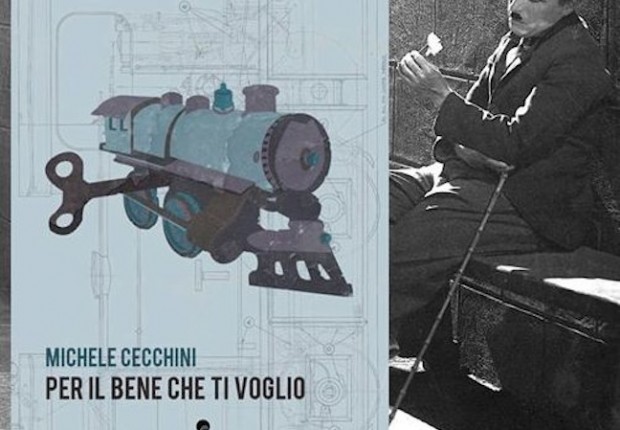Source: italicissima
The word italiese italiese (Italian + English) was coined by Gianrenzo Clivio in 1975 to describe the mixture between Italian and English spoken by Italian immigrants in Canada. This term is also used to describe the Italianized English spoken in the Italian immigrant communities in the United States, England, Australia and New Zealand. And to make the concept even more confusing, today Italians residing in Italy use this term to describe their loans from English.
Made in Little Italy
In the context of immigration, Italiese was the product of life in the Little Italy areas. These urban districts were mainly populated by southern immigrants, many of whom spoke only their local dialects, having never been exposed to the standard Italian. First-generation immigrants therefore had to face two linguistic obstacles: English and the often incomprehensible dialects spoken by their Italian compatriots.
An Italian ethnic dialect
The immigrants borrowed English words and phrases incorporating them in their speeches each time they were exposed to new objects or concepts there were no equivalent in Italian. Some of the best known examples include checca (Eng. Cake, Ital.torta) and storo (Ing. Store, Ital. negozio). These terms were used among relatives and communities, creating what Marcel Danesi (1985) calls “ethnic dialect” or “ethnolect”, which allowed immigrants from different parts of Italy to communicate with each other.
Italianized English
In general, the Italiese is a version of English who has undergone a process of nativization, or Italianization, which means that it was morphologically and phonologically adapted to Italian. To make it simpler, Italiese is English disguised as an Italian. Names and adjectives therefore tend to use the final Italian standard: -o and -e in the masculine singular, -a and -e in the feminine singular. The verbs often end in -are.
Nouns
ciso (Eng. cheese; Ital. formaggio)
battirummi (Eng. bathroom; Ital. bagno)
pinabarra (Eng. peanut butter; Ital. burro d’arachide)
sonamabiccia (Eng. son of a bitch; Ital. figlio di puttana)
stritto (Eng. street; Ital. via)
Adjectives
api (Eng. happy; Ital. contento)
attrattivo (Eng. attractive; Ital. attraente)
bisi (Eng. busy; Ital. occupato)
cippe (Eng. cheap; Ital. economico)
smarto (Eng. smart; Ital. intelligente)
Verbs
beccappare (Eng. to back up (a car); Ital. fare marcia indietro)
frizare (Eng. to freeze; Ital. congelare)
casciare (Eng. to cash (a check); Ital. riscuotere)
leoffare (Eng. to lay off; Ital. licenziare)
squizare (Eng. to squeeze; Ital. spremere)
Other Forms
The Italiese is also composed of loanshifts, casts and approximations. Loanshifts are loans of Italian words that resemble English even if they have very different meanings in Italy. The casts are simply word by word translations of English phrases into Italian or Italiese. Some of the most amusing examples of the Italiese are approximations, or English words written as they would be written in Italian.
Loanshifts
gioco (Eng. joke; Ital. scherzo)
messa (Eng. mass; Ital. messa [in chiesa])
principale (Eng. principal; Ital. preside or capo)
sopportare (Ing. to support [financially]; Ital. sostenere or supportare)
tronco (Ing. trunk [for travel]; Ital. bagagliaio)
Casts
aspetto per (Eng. I’m waiting for; Ital. aspetto)
fa senso (Eng. it makes sense; Ital. ha senso)
guardi bene (Eng. you look well [good]; Ital. stai benissimo)
io sono sette anni (Eng. I am seven years old; Ital. ho sette anni)
una capa di caffe (Eng. a cup of coffee; Ital. un caffè)
Approximation
ai calla iu becca (Eng. I’ll call you back; Ital. ti richiamo)
ariappa (Eng. hurry up; Ital. sbrigati)
donguori (Eng. don’t worry; Ital. non ti preoccupare)
taimanahaffa (Eng. time and a half (pay); Ital. straordinario)
tencsalotto (Eng. thanks a lot; Ital. grazie mille)
Regional variants
The linguistic situation in the various Little Italy areas was similar to that of the Italian peninsula. While there was no standardized form of Italiese, as is the case with the Italian language, there was a different version with regional variations corresponding to the various Italian dialects. Danesi (1985) argues that it is therefore more correct to characterize the Italianized English spoken in the Little Italy as Italiese from Sicily, Italiese from Friuli, Italiese from Calabria and so on. For example: the English word to indicate the restaurant bill is “billo” in generic Italiese but “billu” in Italiese from Calabria.
Italiese in the “Bel Paese”
In Italy, meanwhile, an Italian variant of the Italiese, also known as Itanglese, has existed for more than a century. The Italian Italiese, however, is not a consequence of immigration, but rather of a cultural export, in particular of the English and American cultures. Despite the protests of linguistic purists who want to preserve the Italian language from further English invasions, the use of Italiese is gaining ground in Italy thanks to American technology and social media channels. Although Italians are more likely to borrow English words and phrases in their intact forms, such as “drinks” and “coffee breaks”, Italian dictionaries such as Zingarelli and Garzanti contain hundreds of English-Italianized terms. Some examples include:
Nouns
processore (processor)
sensore (sensor)
Verbs
bloggare (to blog)
bookmarkare (to bookmark [a website])
googlare (to Google)
sharare (to share [a file])
twittare (to tweet)
upgradare (to upgrade [software])
zippare (to zip [documents])
The effects of assimilation
Italiese brought together immigrants abroad in very similar way to how Italian standard joined the Italians after the unification of Italy in 1861. Italians from different regions, unable to communicate, forged a common language and, consequently, a common identity. However, the tendency of Italian immigrants to assimilate successfully into the new English communities, has led to the collapse of the Italiese abroad. Ironically, Italians in Italy are willing to be part of a global community dominated by the English language, which is why the Italian variant of the Italiese is thriving.
Note:Most of the Italiese in this article has been quoted by G.P. Clivio Online Dictionary of Italiese, published by the Frank Iacobucci Center for Italian Canadian Studies at the University of Toronto.
If you are interested in the Italian industry of Little Italy in New York, I invite you to read my post on the award-winning novel Life of Melania G. Mazzucco.




Leave A Comment